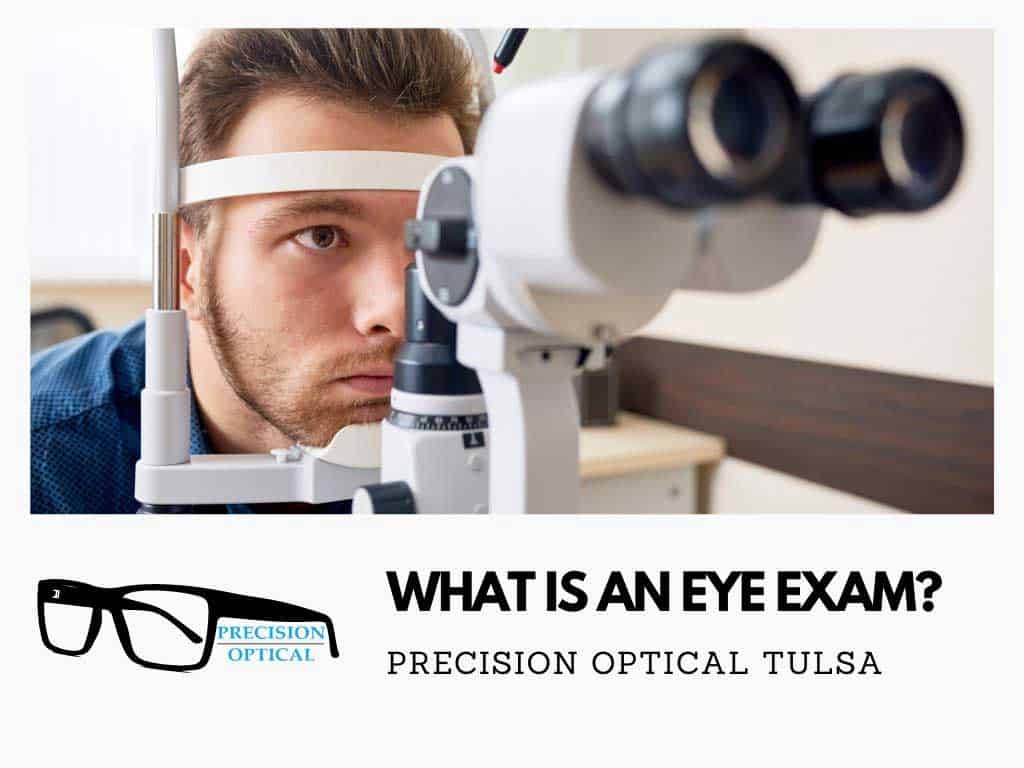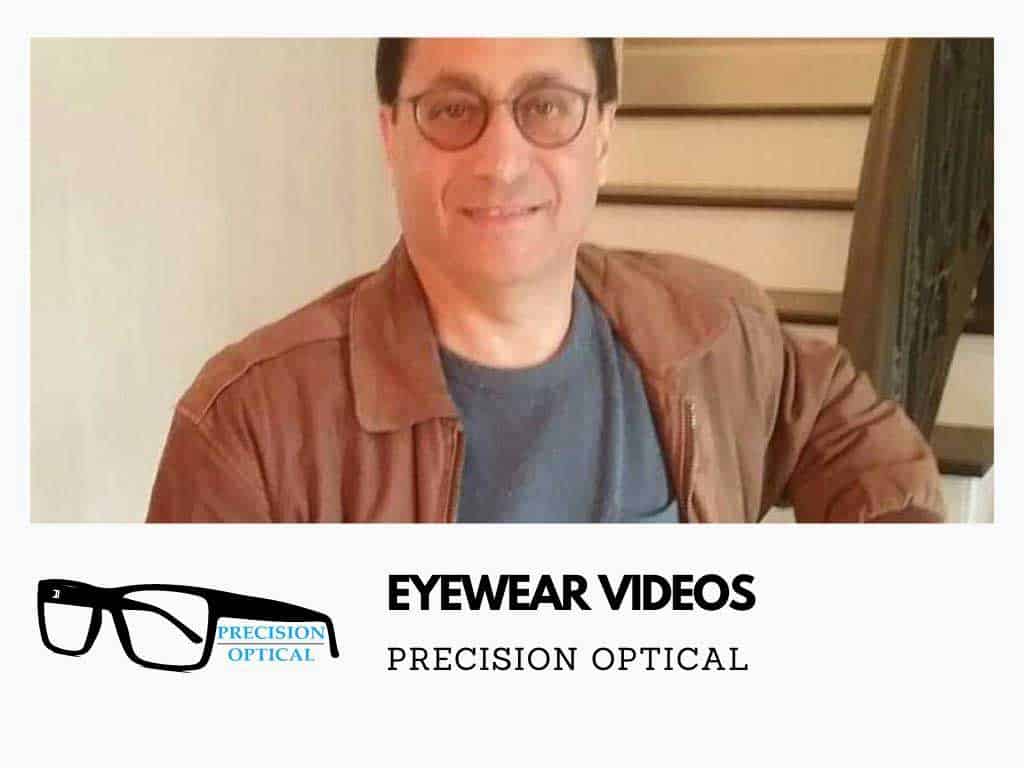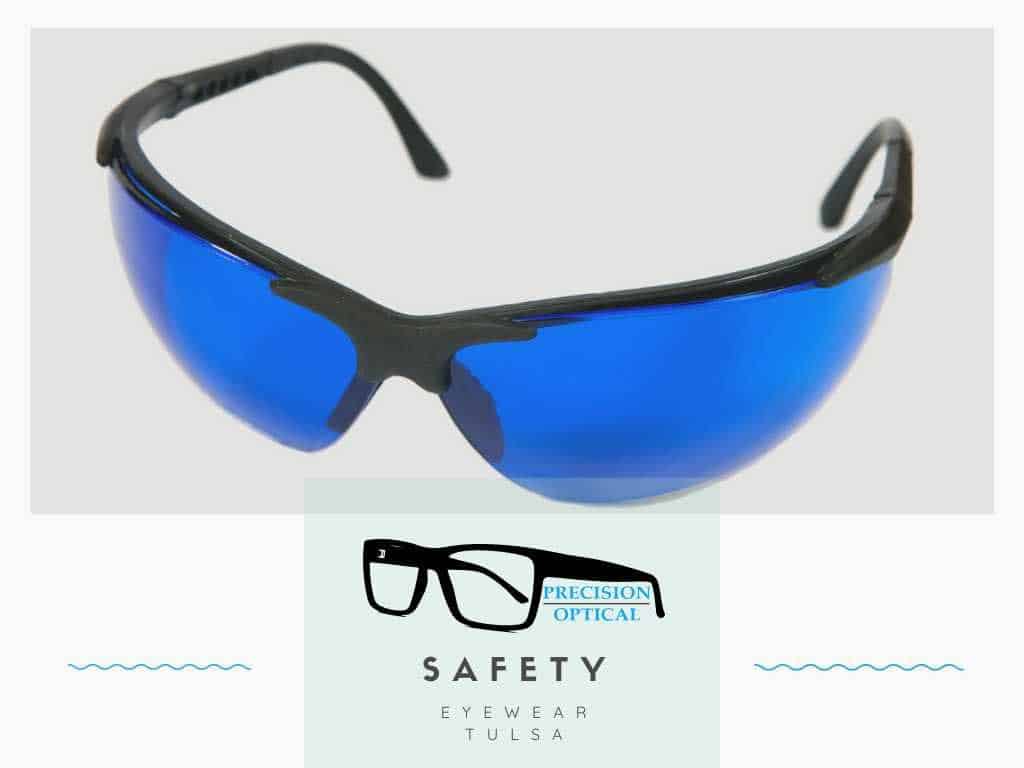An eye examination is a procedure that follows multiple steps to determine one’s eye health performed by an optometrist (a type of eye doctor).
An eye exam takes roughly an hour to complete; however, this varies depending on the number of tests required. To give a better idea of what an eye exam is like, here are some of the types of eye tests that will likely be performed.
Visual Acuity Test
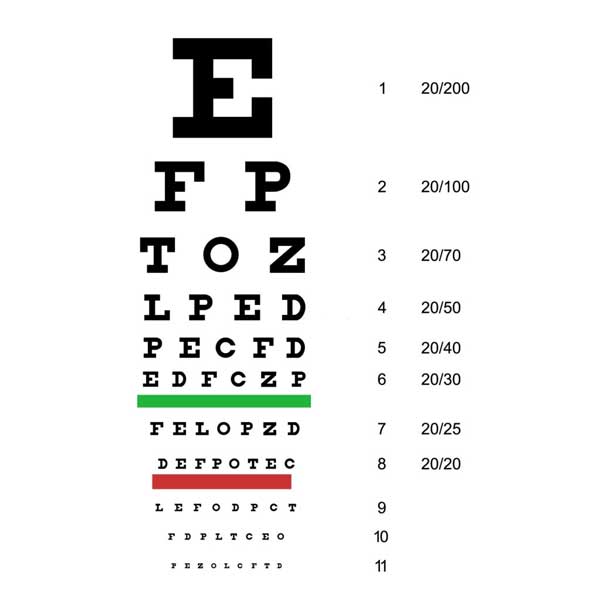
This test is possibly one of the best-known tests. Here, the optometrist tests the strength of the patient’s vision using an eye testing chart (or Snellen chart) with Alphabet letters, which gradually decrease in size.
During the visual acuity test procedure, the patient is asked to identify the letters on the chart to determine their vision’s sharpness.
Part of the test determines the distance of the patient’s eyesight to determine near or farsightedness.
Eye Muscle Test
The eye muscle test is when the optometrist asks the patient to follow an object or light with their eyes. The optometrist can use the eye muscle test procedure to evaluate the eye’s muscles. This can be used to determine if the muscles in the eye are weak, or if the patient’s eye muscles lack coordination.
Slit Lamp Examination
Slit-lamp examinations use a bio-microscope to magnifies and lights up the patient’s eye. This bio-microscope helps the eye doctor examine the structures of the patient’s eye, such as the eyelids, lashes, iris, optic nerve, and cornea. A slit-lamp examination can help to reveal eye diseases, such as diabetic retinopathy and cataracts. Tulsa optician>>
Color Blindness Test
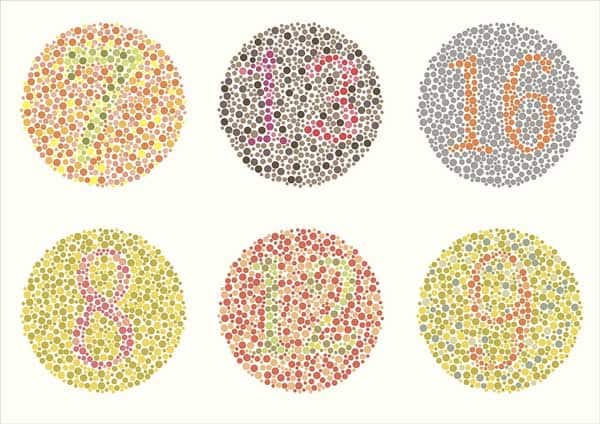
A color blindness test (or color vision test), can inform a patient if they do not possess a strong color vision.
For the most part, this test is used to determine, as the name would imply, whether or not the patient is colorblind.
However, it can also let the optometrist know if any color deficiencies result from health problems rather than genetics.
Cover Test
During a cover test, the optometrist will cover one of the patient’s eyes and request that you focus on a small object that sits on the other side of the room.
While the patient is looking at the object, the eye doctor will cover the other eye.
This will continue, with different objects at varying distances.
Refraction Test
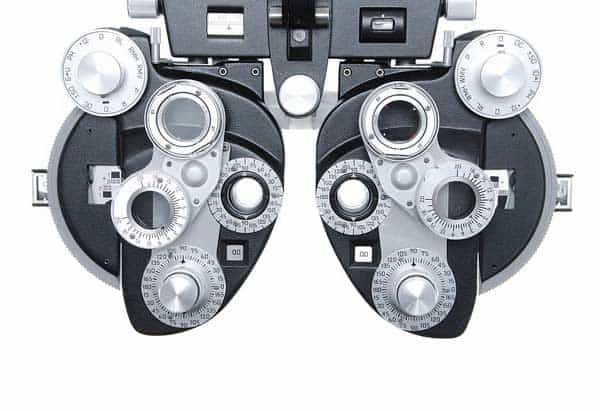
Refraction tests are when the eye doctor uses a phoropter and has a patient look through various combinations of lenses to determine the clearest.
This assessment is done to see if the patient suffers from a refractive error, where rays of light are bent incorrectly by the patient’s eye.
If the patient does have a refractive error, they may require vision correction with eyeglasses or even surgery.
The refraction test is useful for seeing if corrective lenses will be necessary, and, if so, it makes it easier to make a prescription for the patient based on the results.
Glaucoma Screening
An eye doctor uses the glaucoma test to quantify intraocular pressure, which can be used to see if the patient suffers from glaucoma.
A common way this test is performed is by puffing air into the patient’s eye.
This procedure, known as non-contact tonometry, uses a machine to measure the eye’s resistance to the air, which then can determine the fluid pressure inside the eye.
If the pressure is higher than it should be, then the patient is at risk for glaucoma.
Pupil Dilation Test
Sometimes, the optometrist is required to dilate the patient’s pupils to look at the eye’s inner workings. The pupil dilation test is when the eye doctor puts dilating drops into the patient’s eye to enlarge their pupil, and then uses tools to see the inside of the eye.
While this procedure is relatively straightforward, it should be noted that these effects can last up to thirty minutes.
During this time, the patient’s eyes will be sensitive to light, and their depth of field will not be functioning correctly.
As such, it is best to have someone else drive to and from the test.
Why are Eye Exams Important?
With eye exams, opticians can take the optometrist’s prescription from the tests to create corrective lenses for patients.
Furthermore, even if the patient already has glasses from a previous eye examination, getting regular checkups can make sure the lenses are always accurate to their needs.
Patients with a prescription can take it to any glasses shop to have their lenses crafted to receive their glasses or contact lenses.
